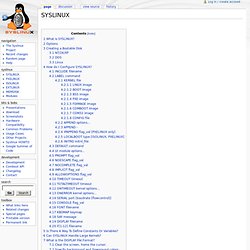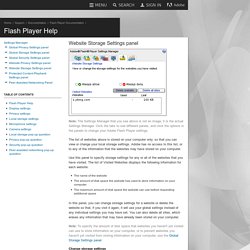

SSH & port forwarding. Convert keys between GnuPG, OpenSsh and OpenSSL - Sysmic.org. OpenSSH to OpenSSL OpenSSH private keys are directly understable by OpenSSL: openssl rsa -in ~/.ssh/id_rsa -text openssl dsa -in ~/.ssh/id_dsa -text So, you can directly create certification request: openssl req -new -key ~/.ssh/id_dsa -out mykey.csr Notice I have not found how to manipulate ssh public key with OpenSSL OpenSSL to OpenSSH Private keys format is same between OpenSSL and OpenSSH, but not public key format.

Ssh-keygen -y -f id_rsa > id_rsa.pub GnuPG to OpenSSL Gpgsm utility can exports keys and certificate in PCSC12: Faster booting with Upstart. 04 November 2009, 16:31 by Mirko Dölle A good portion of the boot time on current Linux systems is spent on system initialisation and starting dozens of daemons sequentially.

The Ubuntu 9.10 development team have started to parallelise and accelerate the boot process through the large scale use of Upstart. This article originally appeared in c't magazine 9/09, p. 176 Loading the Linux kernel takes up just a fraction of the time spent waiting for the login prompt during booting. The current boot sequence, with services starting consecutively in a fixed sequence, remains unaltered simply because no-one has sat down and adapted the init scripts for these various services to the capabilities of Upstart. Both Upstart and SysV init are the first processes to be launched by the kernel (with ID 1) as soon as the latter has booted and any boot scripts from the initial ramdisk (initrd) have been run.
Upstart generates the first event, startup, automatically when it is called. Start on startup task and. SYSLINUX - Syslinux Wiki. SYSLINUX is a boot loader for the Linux operating system which runs on an MS-DOS/Windows FAT filesystem.

It is intended to simplify first-time installation of Linux, and for creation of rescue and other special purpose boot disks. When properly configured, SYSLINUX can be used to completely eliminate the need for distribution of raw boot floppy images. A SYSLINUX floppy can be manipulated using standard MS-DOS (or any OS capable of accessing an MS-DOS filesystem) tools once it has been created. These are the options common to all versions of the SYSLINUX installer: (Note: The following command line options are valid for older versions of SYSLINUX.
-s Safe, slow, stupid: uses simpler code that boots better. These are only available in the Windows version: -m MBR: install a bootable MBR sector to the beginning of the drive. This can only be used in the linux version:Since version 4.00:
Howto: Use rtorrent like a pro « Motho ke motho ka botho. DiggI’m a huge rtorrent fan.

I can’t imagine why anyone would use anything else, unless there’s something funky the big-name programs can do, that rtorrent just doesn’t handle yet. This time, instead of introducing you to rtorrent nice and easy, like I did with cplay, I’m going to give you a brief tour, and then I’ll show you something very cool you can do with it. rtorrent is an amazing, complex, powerful program that is at the same time sleek, clean, comprehensive and ultralight — and I’m giving you just one small idea of its potential. But first, let’s scratch the surface. Like a lot of console-driven programs, the startup screen for rtorrent is … rather dry. That’s all you get. To add a torrent, press return and navigate to the torrent file. You can use tab completion to make your way to it. Note that it’s still labeled as “INACTIVE.” rtorrent won’t start downloading until you tell it to. Now we’re moving. That’s about it, in a nutshell. What’s that mean, you say? How to change Gnome Proxy Settings on a Terminal window.
Sending emails from Ubuntu without having a mail server ~ Ubuntu tutorials. Flash Player : Settings Manager - Website Storage Settings panel. Note: The Settings Manager that you see above is not an image; it is the actual Settings Manager.

Click the tabs to see different panels, and click the options in the panels to change your Adobe Flash Player settings. The list of websites above is stored on your computer only, so that you can view or change your local storage settings. Adobe has no access to this list, or to any of the information that the websites may have stored on your computer. Use this panel to specify storage settings for any or all of the websites that you have visited. The list of Visited Websites displays the following information for each website: The name of the website The amount of disk space the website has used to store information on your computer The maximum amount of disk space the website can use before requesting additional space Change storage settings To specify storage settings for a website, select the website in the Visited Websites list, and then change its storage settings as desired.
Debian Sources List Generator.